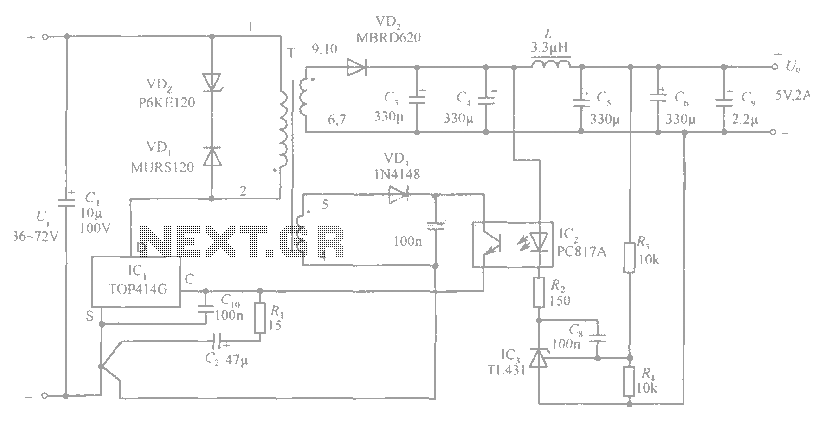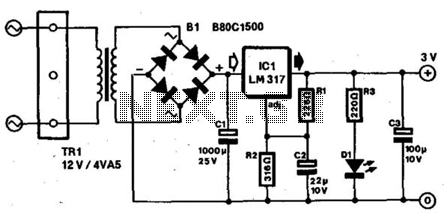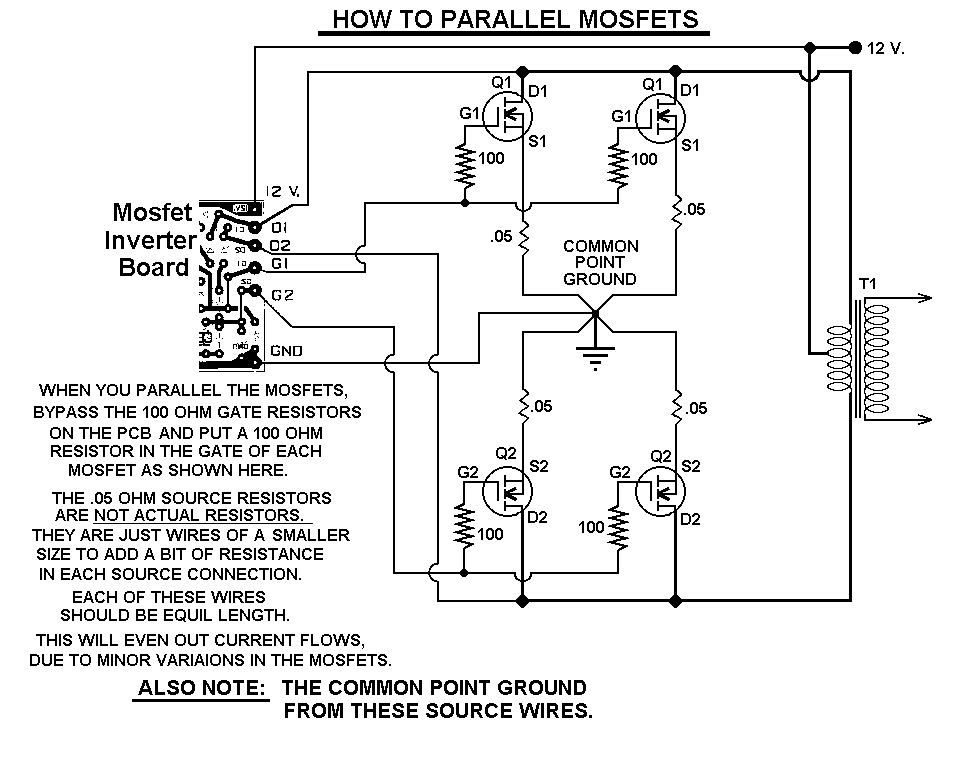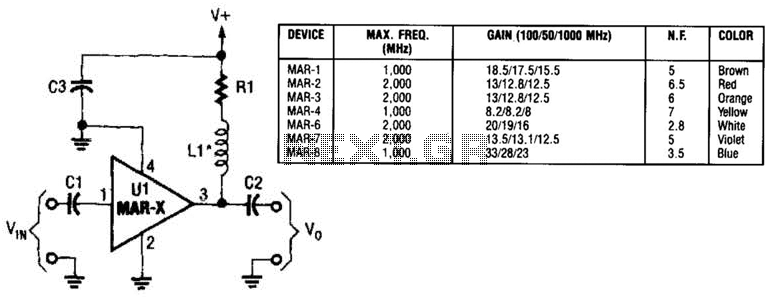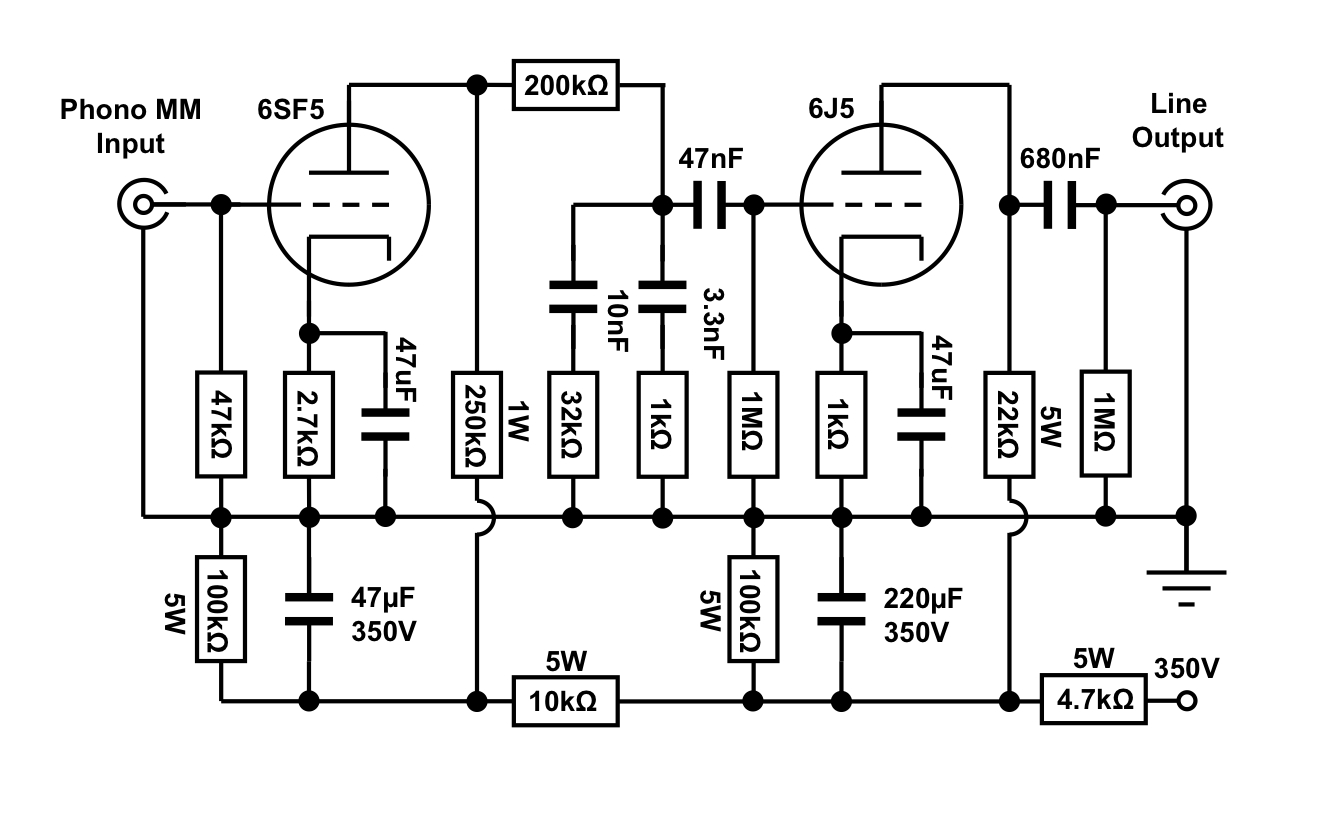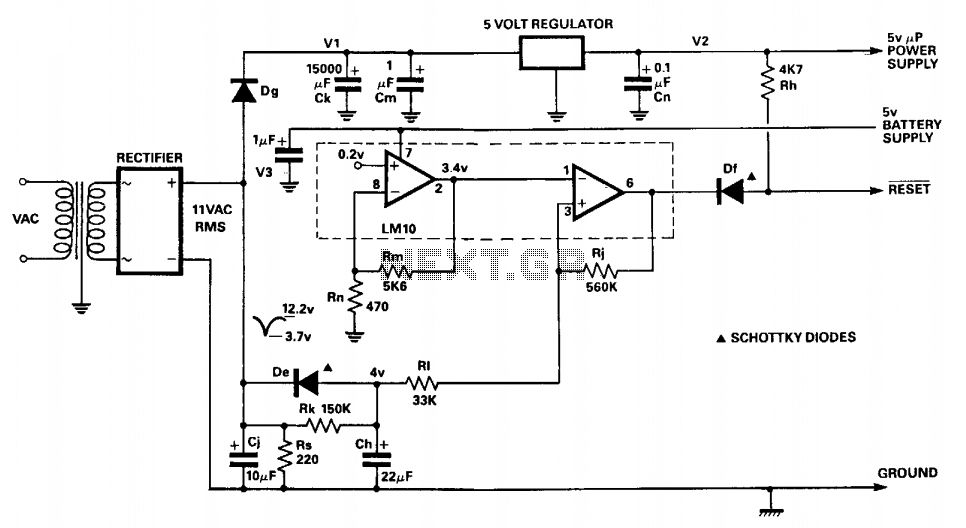
Pre-dividing power amplifier
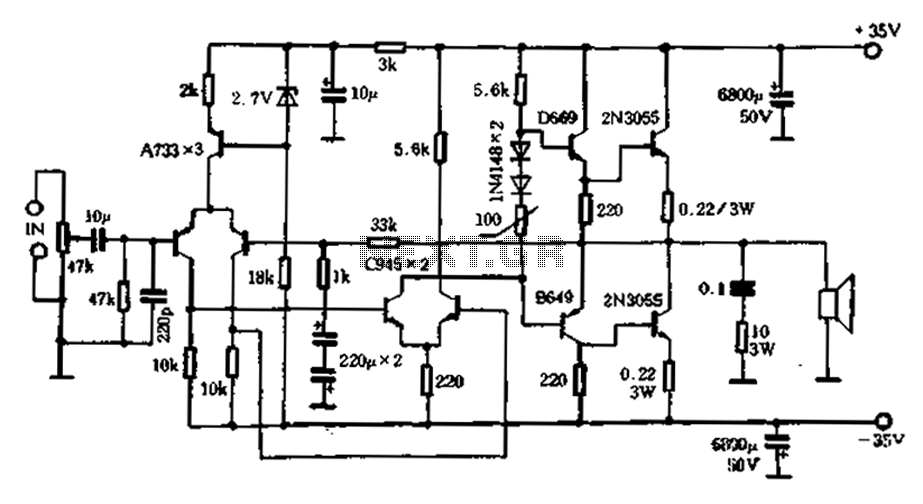
An active high-power tube operates in the MHz range, priced around 3 to 4 yuan, with a transition frequency (fT) exceeding one-fifth of 50 MHz for similar power tubes. This circuit is designed for high reliability in low-frequency high-power amplifier applications. It is a mature design that does not present the same issues as full-band high-power amplifiers, such as potential damage or complex low-frequency capacitance and resistance compensations. Its robust energy output makes it particularly suitable for home theater systems, and the low cost of the power supply section is noteworthy. For those interested in modifying the amplifier to Class A, this would enhance its high gain characteristics, albeit with reduced efficiency. The circuit utilizes high-current, high-power tubes that operate reliably, with the option to increase the heat sink or connect in parallel, excluding power supply considerations. Transient distortion and high-frequency self-excitation can be managed easily, and the design allows for the creation of low-power amplifiers, such as a 30W power amplifier, which can achieve a slew rate of approximately 20V/microsecond. This amplifier design is cost-effective and time-efficient, even allowing for the use of integrated amplifiers.
The described circuit is a high-power amplifier utilizing an active high-power tube that operates effectively in the MHz frequency range. The design emphasizes simplicity and reliability, making it suitable for low-frequency applications, particularly in home theater systems. The circuit's architecture is mature, ensuring that it avoids common pitfalls associated with more complex full-band amplifiers. This includes the elimination of the need for extensive low-frequency compensation components, thereby simplifying the overall design and reducing potential points of failure.
The low cost of the circuit, particularly regarding the power supply, makes it an attractive option for consumers and hobbyists alike. The potential modification to a Class A amplifier configuration is particularly noteworthy, as it would enhance the amplifier's gain characteristics, although this comes at the cost of efficiency. The high-current, high-power tubes used in this design are noted for their robustness, allowing for reliable operation under high power conditions.
Thermal management is a critical aspect of high-power amplifiers, and this design allows for the addition of larger heat sinks or the option to connect tubes in parallel to manage heat dissipation effectively. This flexibility ensures the amplifier can handle the thermal demands of high power output without compromising performance.
Transient distortion and high-frequency self-excitation are challenges that can arise in high-power amplifier designs. However, this circuit provides solutions to manage these issues effectively, ensuring stable performance across varying loads and frequencies. The ability to produce low-power amplifiers, such as a 30W variant, with a slew rate of approximately 20V/microsecond, highlights the versatility of this design. This capability makes it suitable for a range of applications, from casual listening to more demanding audio environments.
Overall, this high-power amplifier circuit represents a cost-effective and reliable solution for audio amplification needs, combining high performance with ease of use and modification potential.Active lOA/loOw above, T several MHz high-power tube (the price is only about 3 to 4 yuan a, is fT of more than one-fifth SOMHz same power tube below) 6 we can use for producti on of very simple circuit is excellent good, high reliability in low frequency high power amplifier towel 4. 5] is a mature shows a circuit, you do not worry it will be like the heart of a full-band high power amplifier as problematic or damaged, there is no need to use low-frequency capacitance resistance or various high compensation, and its plenty of energy particularly suited to home theater systems q in addition to the power supply section, you will no doubt be surprised its low cost.
And you want it changed to Class A amplifier, to better reflect its high gain (non-efficient) benefits. This is some high-current, high-power tube work together rock solid, you just appropriate to increase the radiator or in parallel can be jumped (not taken into account the power supply).
What transient distortion; high-frequency self-excited you can easy to settle, while making high frequency low power (relative) amplifiers, such as, 30W power amplifier, because less power, it has a slew rate 20V/microsecond or so is enough points, and this, this kind of amplifier do it to save money and save time, you can even use the integrated amplifier.
The described circuit is a high-power amplifier utilizing an active high-power tube that operates effectively in the MHz frequency range. The design emphasizes simplicity and reliability, making it suitable for low-frequency applications, particularly in home theater systems. The circuit's architecture is mature, ensuring that it avoids common pitfalls associated with more complex full-band amplifiers. This includes the elimination of the need for extensive low-frequency compensation components, thereby simplifying the overall design and reducing potential points of failure.
The low cost of the circuit, particularly regarding the power supply, makes it an attractive option for consumers and hobbyists alike. The potential modification to a Class A amplifier configuration is particularly noteworthy, as it would enhance the amplifier's gain characteristics, although this comes at the cost of efficiency. The high-current, high-power tubes used in this design are noted for their robustness, allowing for reliable operation under high power conditions.
Thermal management is a critical aspect of high-power amplifiers, and this design allows for the addition of larger heat sinks or the option to connect tubes in parallel to manage heat dissipation effectively. This flexibility ensures the amplifier can handle the thermal demands of high power output without compromising performance.
Transient distortion and high-frequency self-excitation are challenges that can arise in high-power amplifier designs. However, this circuit provides solutions to manage these issues effectively, ensuring stable performance across varying loads and frequencies. The ability to produce low-power amplifiers, such as a 30W variant, with a slew rate of approximately 20V/microsecond, highlights the versatility of this design. This capability makes it suitable for a range of applications, from casual listening to more demanding audio environments.
Overall, this high-power amplifier circuit represents a cost-effective and reliable solution for audio amplification needs, combining high performance with ease of use and modification potential.Active lOA/loOw above, T several MHz high-power tube (the price is only about 3 to 4 yuan a, is fT of more than one-fifth SOMHz same power tube below) 6 we can use for producti on of very simple circuit is excellent good, high reliability in low frequency high power amplifier towel 4. 5] is a mature shows a circuit, you do not worry it will be like the heart of a full-band high power amplifier as problematic or damaged, there is no need to use low-frequency capacitance resistance or various high compensation, and its plenty of energy particularly suited to home theater systems q in addition to the power supply section, you will no doubt be surprised its low cost.
And you want it changed to Class A amplifier, to better reflect its high gain (non-efficient) benefits. This is some high-current, high-power tube work together rock solid, you just appropriate to increase the radiator or in parallel can be jumped (not taken into account the power supply).
What transient distortion; high-frequency self-excited you can easy to settle, while making high frequency low power (relative) amplifiers, such as, 30W power amplifier, because less power, it has a slew rate 20V/microsecond or so is enough points, and this, this kind of amplifier do it to save money and save time, you can even use the integrated amplifier.
